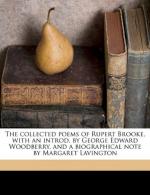|
This section contains 1,359 words (approx. 5 pages at 300 words per page) |

|
SOURCE: "George Edward Woodberry," in American Literary Criticism: 1900-1950, Hendricks House, 1969, pp. 91-108.
In the following essay, Glicksberg identifies the aesthetic principles of Woodberry's criticism.
Born at Beverly, Massachusetts, on May 12, 1855, Woodberry was educated at Phillips Exeter and then attended Harvard University. After graduating from Harvard, he taught at the University of Nebraska and served for a short period on the staff of The Nation. From 1882 to 1891 he settled down to literary work, contributing material to the Atlantic Monthly and acting as literary editor of the Boston Post. His distinguished lifework began in 1891 when he was appointed professor of English at Columbia University. Upon his retirement from his teaching duties in 1904 he devoted his time to writing and lecturing.
His was a long and fruitful writing career. His first book, A History of Wood Engraving (1883), was followed by his biographies of Poe (1885, revised in 1919), Hawthorne (1902), and Emerson (1907). These...
|
This section contains 1,359 words (approx. 5 pages at 300 words per page) |

|


